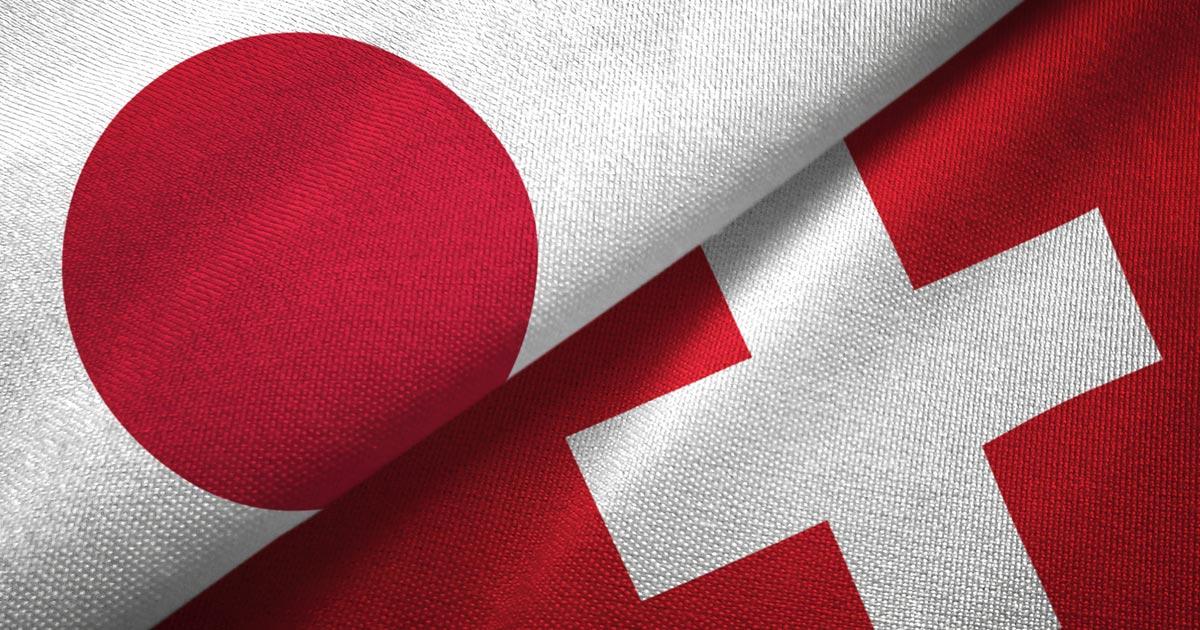
Recently, many industrialized countries such as the United States and the euro area have experienced high and further rising inflation, whereas in Japan and Switzerland inflation has remained low. While inflation reached 5.9 percent in the eurozone and 7.9 percent in the US in February 2022, Japan and Switzerland reported 1.0 percent and 2.2 percent, respectively. Since the turn of the millennium, the average year-over-year inflation has been 0.1 percent in Japan and 0.4 percent in Switzerland, compared to 1.7 percent in the eurozone and 2.2 percent in the US. What causes the exceptionally low inflation rates in these two low-inflation islands? There are three reasons.
First, as US interest rates have gradually declined since the early 1980s, Japan and Switzerland have kept their interest rates below the US’s interest rates. Since 1980, the average yield on ten-year Japanese government bonds has been about 2.8 percentage points lower than the yield on ten-year US government bonds (see figure 1, left panel). The situation is similar in Switzerland (see figure 1, right panel), which is widely regarded as a safe haven for international capital. The increasingly expansionary monetary policies in both countries anticipated high inflation; however, it has not happened, as the drastic expansion of domestic money supply has only partially been absorbed by the domestic economy.
Figure 1: Ten-Year Government Bond Yields, Japan and Switzerland vs. the US
Source: Refinitiv.
The low level of interest rates in Japan and Switzerland curbed foreign capital inflows and favored capital outflows. Japan’s net capital outflows have amounted on average to 2.5 percent of gross domestic product (GDP) per year since 1980, while Switzerland’s have been as high as 8.4 percent of GDP. Compared to the Bank of Japan, the Swiss National Bank has taken on a more active, direct role in capital exports by resisting the appreciation of the franc via buying euros (and selling francs). The persistent outflow of capital has dampened the purchasing power in both countries, thereby reducing domestic price pressures. This applies to both goods and real estate prices, which in each country have risen at a slower pace than in the US.
Second, in line with so-called open interest rate parity, low interest rates in Japan and Switzerland have been accompanied by an appreciation of the Japanese yen and the Swiss franc (Latsos and Schnabl 2018) against the US dollar, on average by 1.4 percent (yen) and 1.0 percent (franc) per year since 1980. Appreciation expectations for both currencies have arisen because persistent net capital outflows have gradually increased the net foreign assets of Japan and Switzerland (see figure 2, as well as McKinnon and Schnabl 2006 on Japan). At the end of 2020, Japan’s net foreign assets were $3.441 trillion (about 68 percent of GDP) and Switzerland’s were $867 billion (about 115 percent of GDP). If these foreign assets were repatriated, the yen and the Swiss franc would come under strong appreciation pressure.
Figure 2: Japanese and Swiss Net Capital Exports and Net Foreign Assets
Source: International Monetary Fund.
Third, a downward wage-price spiral emerged because the appreciation pressure reduced growth and price pressures. Currency revaluations lowered the prices of imported goods and made exported goods expensive abroad. This forced both domestic and foreign market-oriented companies in Japan and Switzerland to keep their prices low. With the need to keep costs under control, wage growth was kept in check. The fact that wage levels in Japan and Switzerland are relatively high by international standards may have facilitated the wage restraint there in comparison to other countries.
However, restrictive wage and price policies in Japan and Switzerland compared to other countries have depreciated the real exchange rate—i.e., the nominal exchange rate adjusted for relative wage (and price) changes. The real devaluation of the Japanese yen and the Swiss franc against the US dollar has been on average 1.4 percent and 0.7 percent per year since 1980 in terms of relative wage adjustment (0.7 percent and 0.4 percent per year in terms of relative price adjustment), depressing imports and favoring exports. Japan and Switzerland have thus more than offset the nominal exchange rate appreciation with low wage and price growth relative to their foreign counterparts (see figure 3). This has curbed domestic demand for foreign products and sustained foreign demand for Swiss and Japanese products, which explains the two countries’ persistent current account surpluses (see figure 2).
Figure 3: Nominal and Real Exchange Rates, Japanese Yen and Swiss Franc vs. US Dollar
Source: Organisation of Economic Co-operation and Development, Ministry of Health, Labour and Welfare (Japan), Federal Statistical Office (Switzerland), US Bureau of Labor Statistics. Note: The real exchange rate is adjusted for consumer price inflation. An increase (decrease) indicates a depreciation (appreciation) of the Japanese yen and Swiss franc against the US dollar.
Do the low inflation rates mean that the purchasing power of Japanese and Swiss citizens has increased relative to that of the citizens of other countries over time? The answer seems to be no. After all, the real interest rate and the real wage growth in both countries have been lower than in the US, which can be considered the most important recipient of Japanese and Swiss capital exports. The average real yield on ten-year government bonds since 1980 has been 2.9 percent in both Japan and Switzerland, compared with 5.5 percent in the US (see figure 4, left graph).
Similarly, the average real wage increase per year since 1980 has been 0.3 percent in Japan and 0.6 percent in Switzerland, compared with 0.9 percent in the US (see figure 4, right graph). From this perspective, citizens in Japan and Switzerland have not really benefited from exceptionally low consumer price inflation. Rather, consumers in the US seem to have benefited from a growing level of purchasing power, which may be partly due to capital inflows from Japan and Switzerland.
Figure 4: Real Interest Rates and Real Wage Index in the US, Japan, and Switzerland
Source: Refinitiv, Ministry of Health, Labour and Welfare (Japan), Federal Statistical Office (Switzerland), and Social Security Administration (US).
References
Latsos, Sophia, and Gunther Schnabl. 2018. “Net Foreign Asset Positions and Appreciations Expectations on the Japanese Yen and the Swiss Franc.” International Economics and Economic Policy 15(2): 261–80. https://doi.org/10.1007/s10368-017-0403-5.
McKinnon, Ronald, and Gunther Schnabl. 2006. “China’s Exchange Rate and International Adjustment in Wages, Prices, and Interest Rates: Japan Déjà Vu?” CESifo Economic Studies 52, no. 2 (June): 276–303. https://doi.org/10.1093/cesifo/ifl007.






